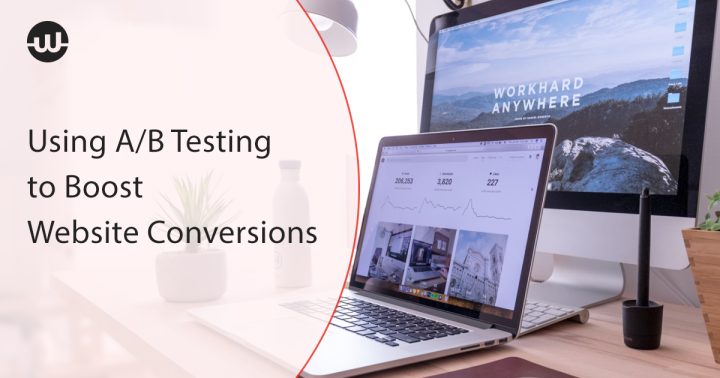A/B testing, also known as “split testing,” is a powerful method to improve conversions, increase average order values, and enhance the customer experience on your website.
Unfortunately, there’s a lot of misinformation online about setting up effective tests. It’s easy to miss simple opportunities and focus on things that don’t impact your bottom line.
The good news is that running an effective A/B test can be straightforward if you stick to the basics. In this article, we will cover the best practices for A/B testing to help you get the best results from every experiment.
For more insights on effective product design, visit Linkup Studio.
What is A/B Testing?
A/B testing is a method where brands show two versions of the same website experience to different visitors. The goal is to see how users interact with the website differently based on those versions.
Each A/B test has a specific goal. This goal can be quantitative, like increasing order size, improving checkout rates, or boosting conversions. It can also be qualitative, such as understanding user preferences or clarifying product information.
In most cases, A/B testing helps clients validate ideas, increase landing page conversion rates, raise revenue per visitor, and improve customer satisfaction. For more insights on the product design process, check out this article: https://linkupst.com/blog/product-design-process.
Sometimes, a small change can make a big difference.
The Benefits of A/B Testing
When you conduct A/B testing strategically and methodically, you will:
- Better understand your customers’ needs and preferences, helping you create a clearer buyer persona.
- Gain actionable insights more quickly, allowing your company to increase revenue.
- Foster a research-driven culture that prioritizes the customer over the stakeholders.
In scientific terms, this means having a hypothesis. A/B testing converts hypotheses into real numbers with statistical significance, helping you make better decisions.
Here are four key ways to improve conversions through A/B testing.
4 Ways to Improve Conversions Through A/B Testing:
- Examine the hypothesis.
- Conduct user testing.
- Analyze the costs and benefits.
- Learn quickly and implement promptly.
Examine the hypothesis.
Start by reviewing the idea with competitors, colleagues, and other businesses in your network. Is the idea being used by others in your industry? An idea needs more than novelty to be implemented; it should be backed by solid evidence that it will work. If it’s not, discard it.
Next, ask: Is your idea solving a real problem that customers have mentioned in conversations or support tickets? If it’s not, discard it.
Lastly, check with other stakeholders, such as those responsible for revenue and acquisition. Does the hypothesis score highly as a problem worth solving? If not, discard it.
Conduct User Testing
Once you’ve narrowed down your hypothesis to the most promising ideas, create a few solutions. However, don’t test all the ideas at once, as this will significantly increase the time needed to find actionable insights.
The best approach is to eliminate diverging ideas through quick user testing. By showing prototypes to real customers, you can quickly identify the one or two solutions they find most useful.
For example, if you’re testing new navigation for a shoe company, you might ask a user to perform a specific task on your website. You could say, “If you’re looking for leather shoes, how would you do that using this navigation?”
After they’ve completed the task using one navigation, show them the second option and ask them to do the same thing. Then, ask which navigation they preferred or found easier. This quick feedback helps you save time by identifying the best ideas. The user will tell you which navigation they liked and which one they didn’t.
Analyze the costs and benefits.
Before starting an A/B test, conduct a cost-benefit analysis to determine if it’s worth it. This step comes after user testing, which helps you identify obvious variables to avoid. Early, affordable feedback from a few users can help decide whether to proceed with the more expensive and time-consuming A/B test. For tips on selecting an outsourcing UI/UX designer to assist with this process, check out this guide: https://linkupst.com/blog/your-ultimate-guide-to-a-stress-free-selection-of-an-outsourcing-ui-ux-designer.
To do this, add up all the costs of creating the test (including the time of the digital product team, platform costs, and the opportunity cost of not working on other projects) versus the potential benefits (such as an increase in conversion rate or cart value). If the benefits outweigh the costs, then prioritize the test.
Learn quickly and implement promptly.
The goal of an A/B test is to gather new information that will help you create a final solution for your customers. Spending too much time perfecting the test increases the overall cost.
Remember, this is just a test, not the final solution. So, focus on getting it done quickly rather than waiting.
Like SEo and paid ads, you don’t want to rely on hacks and random tactics to achieve growth. You need a strategy that helps your company reach significant results towards a clear goal. For more insights, you can watch this video.
A well-planned A/B testing strategy can improve your brand and bottom line. It also helps you understand your customers better and how to serve them best.
